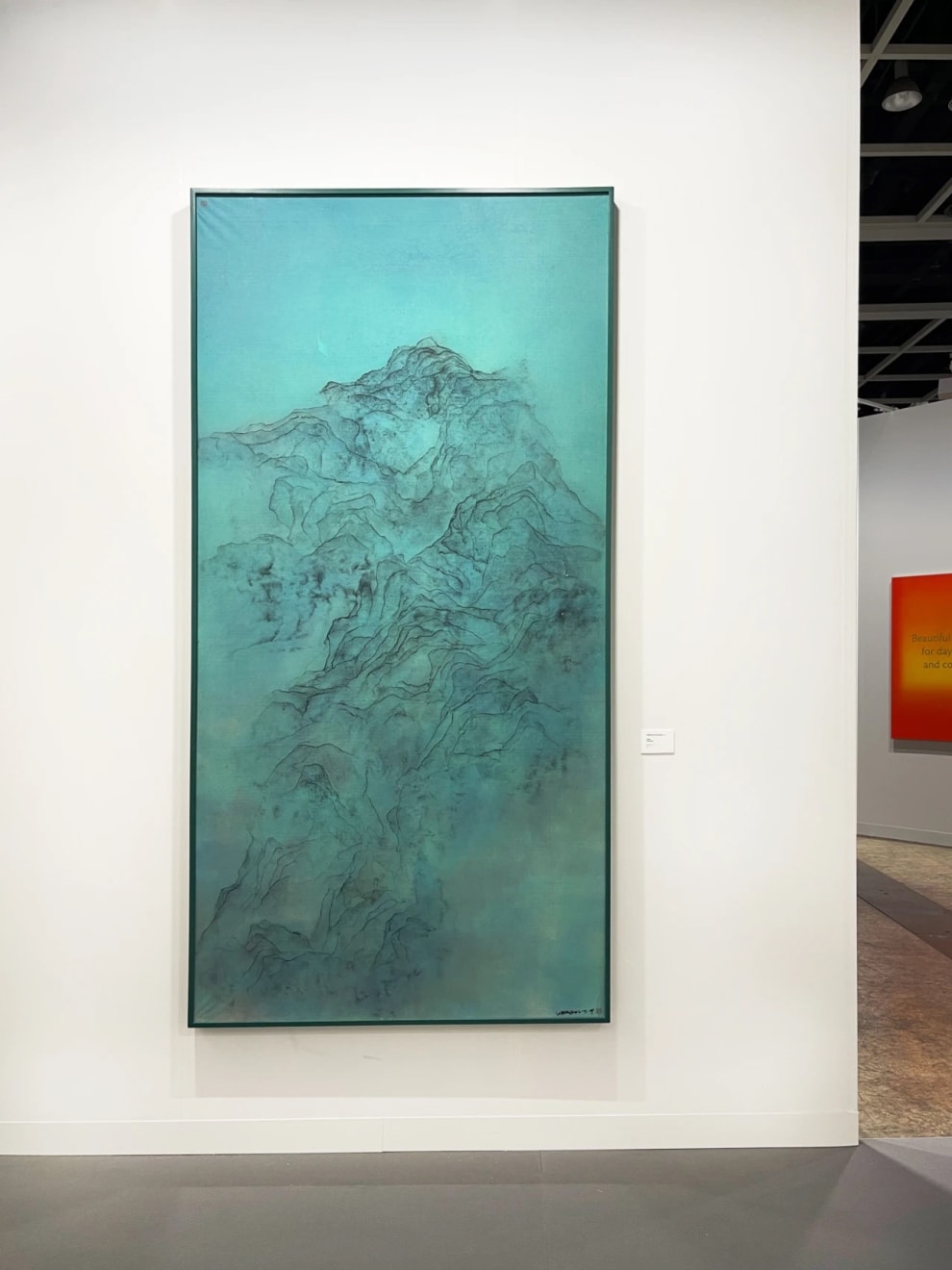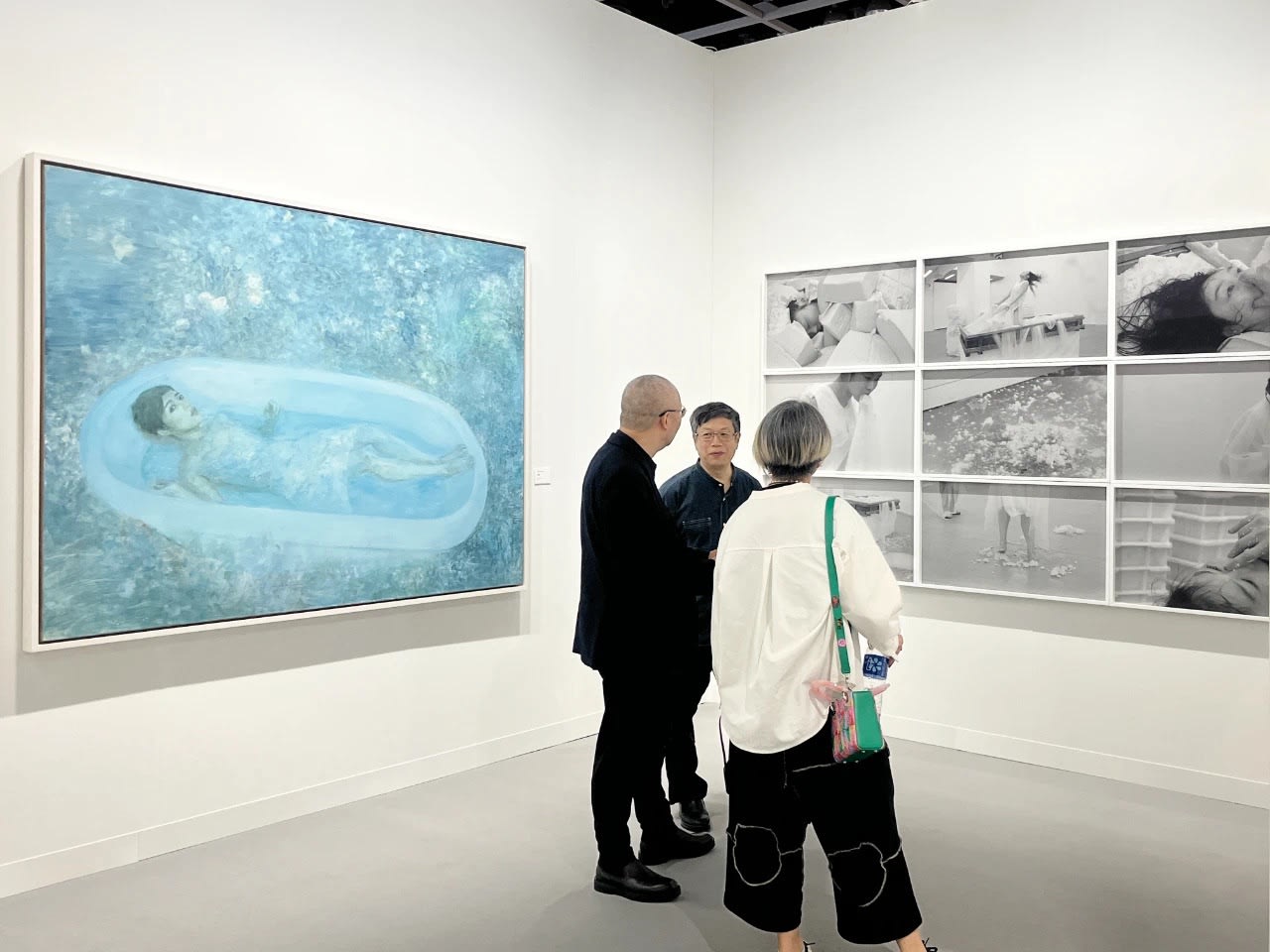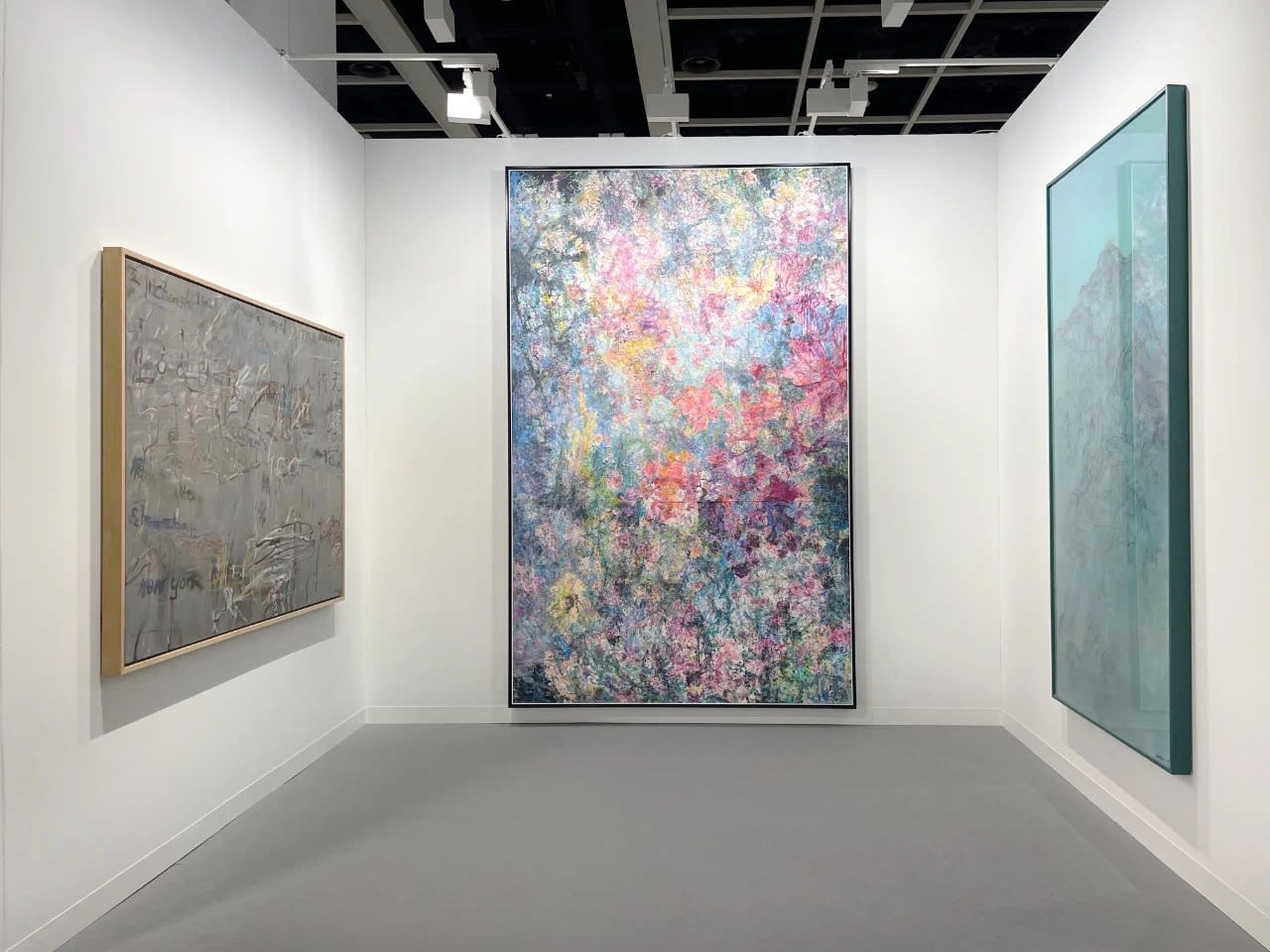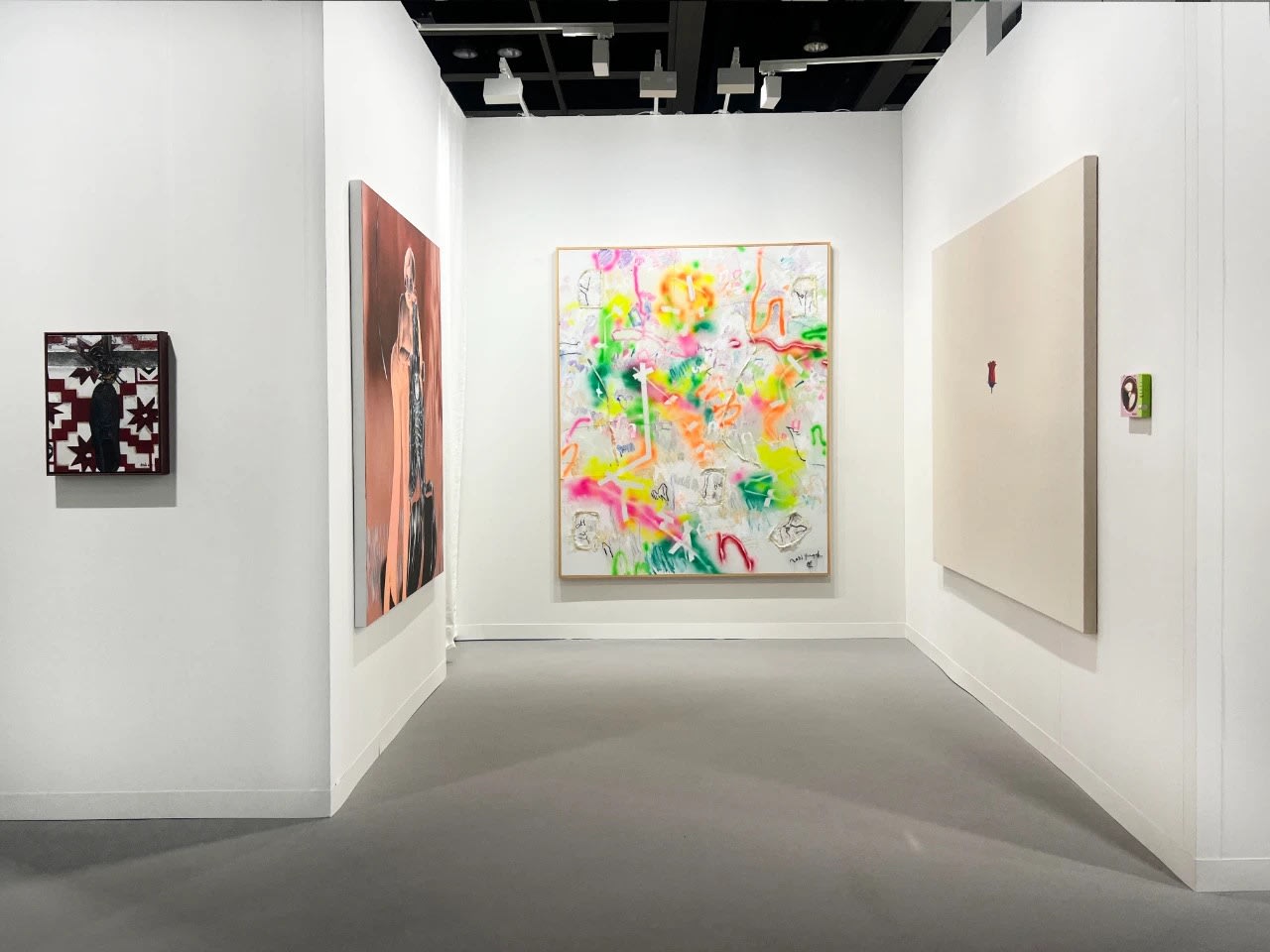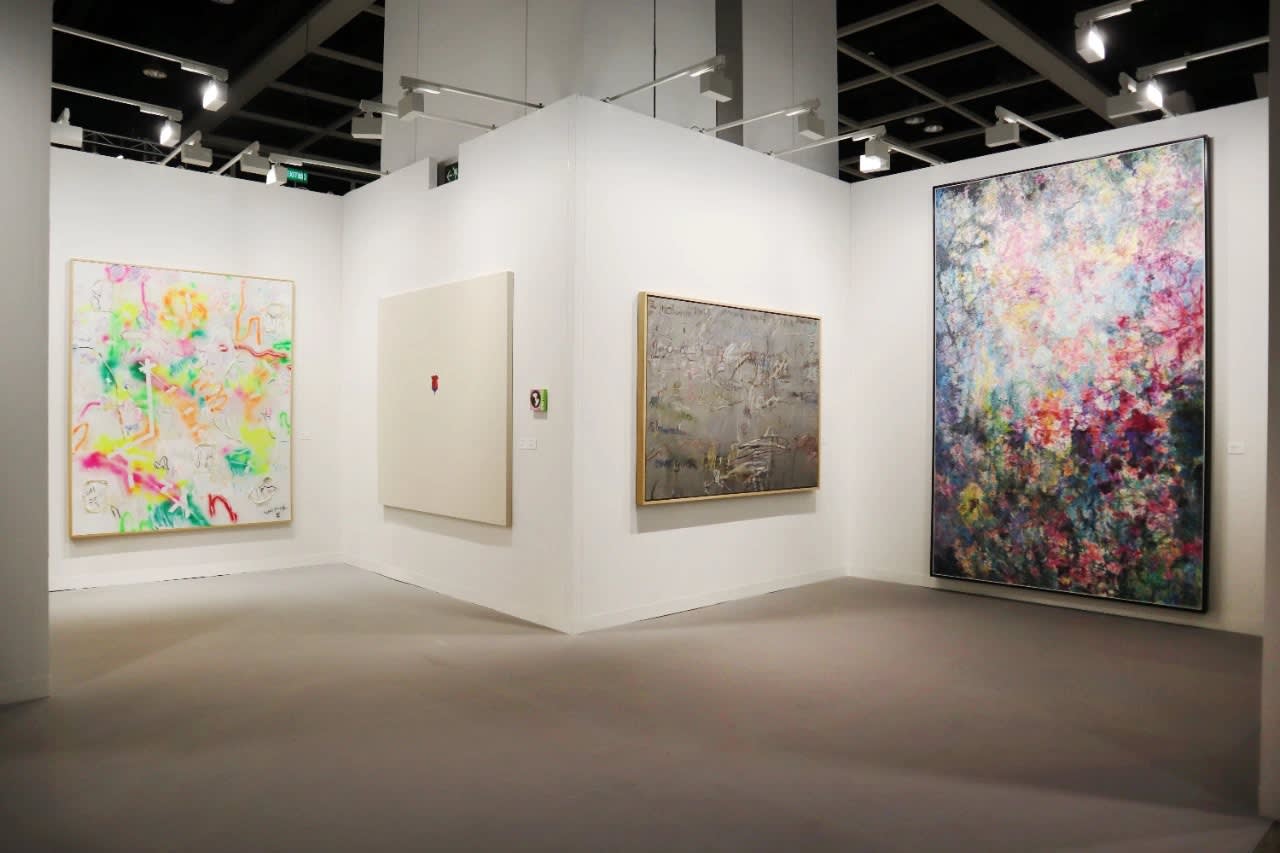Art Basel Hong Kong 2025
Overview
A Thousand Plateaus Art Space is pleased to announce our participation in Art Basel Hong Kong 2025 , where we will be presenting respectively paintings, installations, videos, and photographs by 12 artists from March 26th to March 30th in the main sectors Galleries and Film , Booth 3C21. They are: Bi Rongrong, Chen Qiulin, Chen Xiaoyi, He Duoling, Ma Wenting, Qi Lan, Rao Weiyi, Wang Chuan, Wang Shaoqiang, Xiong Haoqi, Yang Shu, Zhai Liang.
Galleries
Bi Rongrong
Bi Rongrong (b. 1982) was born in Ningbo, Zhejiang Province. She received her MA in Chinese Traditional Landscape Painting at Sichuan University in 2008, followed by an MFA in Painting from the Frank Mohr Institute in the Netherlands. In 2024, Bi Rongrong was one of the six winners for the“Sigg Prize 2025”at the M+ Museum in Hong Kong. In 2022, Bi Rongrong was one of the three global winners of the Spirit of Ecstasy Challenge in Muse, the Rolls-Royce Arts Programme. Her works have been exhibited in various art institutions, foundations, biennials and festivals, including CHAT Centre for Heritage Arts & Textile (Hong Kong), K11 Art Centre, Cass Sculpture Foundation (UK), Hangzhou Triennial of Fiber Art, Shenzhen-Hong Kong Bi-City Biennale of Urbanism/Architecture, Shanghai Urban Space Art Season, etc. In addition, Bi has extensive experience in residency programs both at home and abroad, bringing her own tens of years of research on “patterns” into an intertextual relationship with the local culture. She takes local architecture, posters, flora, fauna, landscapes, or surface patterns of abstract objects, then weaves and combines them. Her creations start from painting and encompass not only the mediums of painting, video, and installation, but also her own unique knitting techniques. Using basic textile techniques, she weaves wool, plastic, and metallic threads into the collected patterns and presents their unique textures and textures. As curator Xu Sheng wrote: “The patterns are often abstract, silent, and expressionless, but their overall shape, delicate details, and texture materials all reveal the invisible power hidden in time, life, or natural circulation. The study and observation of these patterns, as well as the meditation and imagination that come from them, are not only a kind of sorting out the complicated appearances in the tide of the times, but also a practice of the ancestors’ saying "learning from the nature of things".
Chen Qiulin
Chen Qiulin (b. 1975) was born in Yichang, Hubei Province. She graduated from the Printmaking Department of Sichuan Fine Arts Institute in 2000. Chen’s awards include: the recipient of ACC (Asian Cultural Council in New York) grant at China (2006), the First Asian World Women Forum Rising Talents Programme Nominee (2008), The Fourth Annual AAC Award for the Most Influential Participants of Chinese Art 2009 - the Annual Young Artist Nominee (2010) , Loop Award of Loop Art Fair (Barcelona) (2017) etc.. Created during COVID-19, Drown is an integrated project with live interactions and episodic performances, all of which make subtle connections to the geopolitical confinement of the global epidemic. Drown continues the artist's 20-year exploration of tofu as a medium and cultural symbol. Through tofu, an iconic oriental food, the work projects the artist's reflections on her local culture and identity. Compared to the “One Hundred Surnames” series created between 2003-2015, the artist tries to let the concepts of “anti-monumentality” or “anti-caste order” take a backseat to a high degree of integration of performance art, sound art, video and photography. By highly integrating performance art, sound art, video and photography, the artist continues to push forward a soft and fragile aesthetic system intertwined with different sensory systems, such as sight, smell, taste and hearing. Accompanied by the female performer's physical experimentation in the wooden installation - her body is constantly touching, intertwining and confronting with the tofu, revealing the vulnerability and resistance of contemporary society from a female perspective. At the same time, the artist abandoned the conventional live or post-soundtrack and invited sound artists to perform according to the artist's intention and the feeling of the live performance. The work captures the dramatic changes brought about by live dancers in holographic sound, interacting with body language to improvise, capture and create sound, and ultimately creating a holographic text of the live sound of the work Drown.
Chen Xiaoyi
Chen Xiaoyi (b. 1992) was born in Sichuan Province, China. She received an MA Photography from London College of Communication in 2014. Chen Xiaoyi has exhibited internationally and she was awarded the Three Shadows Photography Award in 2015, China’s most prestigious photography prize, and named one of Asia’s 30 Artist under 30 by Forbes magazine 2017. Her work based on photography but not confined to specific media, focusing on the subtle perceptions of human beings by producing images. And constantly challenge the established logic, perception and imagination to explore the existence itself. In the projects that have been progressing in recent years, she has focused on the Western China as a resource area in history, focusing on the mines and mining relics in the Hengduan Mountains region as cuts, and continuously salvaging those lost time, the mystery of nature and the land. From the mining industry in the past to the mountain habitat today, she worked on the relationship between the temporal and spatial stacking of mountains and the land, and tried to scan the western mountains in China through the broader narrative. Chen’s recent works have been exhibited at the Vevey Image (Switzerland), LA NUU photo festival (Spain), La Biennale de la Photographie de Mulhouse (France), Calling/re-Calling-Culture city of east Asia (Japan), Jimei x Arles International Photo Festival (China), Lianzhou Foto (China), Paris Photo (France), Liste Art Fair (Switzerland), London Art Fair (UK), Museum Folkwang (Germany), Benaki Museum (Greece), Guangdong Times Museum (China), OCAT Shenzhen (China), Power Station of Art (China), Three Shadows Photography Art Centre (Beijing), A4 Art Museum (China) etc.
He Duoling
He Duoling (b. 1948) was born in Chengdu, Sichuan Province. He enrolled in Sichuan Fine Arts Institute in 1977 as a major in oil painting and pursued his master's degree there in 1979. After graduation, he worked as an oil painter at the Chengdu Art Academy. He Duoling is a representative of Chinese contemporary lyrical realism oil painting, he has an irreplaceable position in the history of Chinese contemporary art, his works are collected by many important art museums, art institutions and private collectors at home and abroad, such as China Art Museum, Long Museum, Guangdong Museum of Art, Fukuoka Art Museum etc., and the works have been widely researched, documented and disseminated in various art historical works, academic monographs and public media.He's art has a poetic quality, heavy on pictoriality, aesthetic, elegant and sentimental, and he pursues unrestrained freedom. His artistic modeling skills are solid and comprehensive, and where he puts down his brush, the characters and scenes are full of vitality.The sense of simplicity he promotes in the language of form is similar to that of traditional Chinese ink painting, which is meticulous in its refinement and complex in its simplicity, manifesting a transcendent spiritual realm and a deep artistic pursuit.
Ma Wenting
Ma Wenting (b. 1983) was born in Lanzhou, Gansu Province. She received Bachelor's Degree from Department of Chinese Painting, Sichuan Fine Arts Institute in 2001,then received Master's Degree from Department of Oil Painting, Sichuan Fine Arts Institute in 2005.She started teaching in Department of Oil Painting, Sichuan Fine Arts Institute in 2015. Ma was awarded Long Zhongli scholarship in 2008. As an extremely sensitive, delicate and powerful young female artist, Ma’s works are full of living experience and spiritual expression on the basis of paying attention to social reality. She was always able to forcibly reassemble the broken reality in unexpected ways, and deal with the absurd and dramatic reality in a light way but never forgets to emphasize its importance. In poetic language, she presents the spiritual pain and athymia in the context of the great era. By dismembering and reconstructing the reality, she dances with all kinds of reality and absurdity in the context of this era, the coexistence of drama and reality, struggle and bondage. In her paintings, destruction and reconstruction are constantly intertwined, struggled and reconciled. Her works provide a good sample for us to understand the art and reality.
Qi Lan
Qi Lan (b. 1973) was born in Anyue, Sichuan Province. He graduated from Department of Chinese Traditional Painting in Academy of Fine Arts, Southwest Normal University in 1996 and then graduated from Department of Chinese Traditional Painting, Nanjing University of the Arts in 2001. He studied with Professor Wang Mengqi as a Ph.D. candidate in Fine Arts in 2007. Between 2001 and 2018, he used to work for Shanghai Fine Arts Publisher as the deputy editor of contemporary art magazine Art China. In his early years, Qi Lan read the Chinese classics and studied the poetry of the pre-Qin scholars, The Book of Songs, The Songs of Chu and the poetry of the Tang and Song dynasties throughout his youth. The long years of literal reading and painting have constantly intermingled, clashing with each other in the modern cultural context, forming a unique oppressive and rebellious painting language. Painting is for him a debate and reconstruction of knowledge, experience and thought. Each of his works is repeatedly debated and questioned. Using high-density language and variable rhetorical techniques, he searches for rhetorical opportunities in dialogues and debates with the classics of the past and present, drawing on them to deduce complex and varied rhetorical and writing styles, and to counter the homogenization of machine imaging with a variety of mediums and a miscellany of complexities. He emphasizes the physical experience of hand and material language, and has long studied traditional literati painting and Western modern painting, striving to conceive a sense of self-consistency in writing of literati cultivation, giving the traditional writing language a new contemporary visual form and presenting a novel cultural character.
Rao Weiyi
Rao Weiyi (b. 1993) was born in Hunan Province. He graduated from the Oil Painting Department of Sichuan Fine Arts Institute in 2016 with a Bachelor's degree, and graduated from the Oil Painting Department of Sichuan Fine Arts Institute with a Master's degree in 2020. Rao is one of the representative emerging artists of the younger generation, and his awards include: the Porsche Research Scholarship (2020), the Silver Award of the 3rd Powerlong Art Award (2020), The Gift Nomination Award of the School of Fine Arts of Sichuan Fine Arts Institute (2020), the 10th New Star Art Award TOP100 (2019) etc.. He transforms the unique texture of web images into an experimental painting language, highlighting the visual logic of fragmentation from the lack of clarity, collage, and absurdity unique to web images. At the same time, he uses painting to restore the electronic texture of the image, replicating the visual characteristics of the pixel with airbrush, brushstrokes, and paint, bringing about different combinations of colors, textures, and compositions, thus transforming the paintings into a kind of creative visual “replica”.
Wang Chuan
Wang Chuan (b. 1953) was born in Chengdu, Sichuan Province, and received BA in Traditional Chinese Painting from Sichuan Fine Art Institute in 1982. Wang Chuan is a key figure in the Scar Art movement. He began his early career as a successful realist painter and turned to abstract painting during the 1985 New Wave period. In the late 1990s, sudden illness brought Wang Chuan to a turning point that transformed painting into his personalized spiritual practice. The energy at work in his recent work arises from contrasts of scale, density, line and surface. This kind of introspective and self-reflective way of working has enabled Wang to achieve insights, especially through the contemplation of oriental philosophy. This spiritual experience cannot be merely obtained from art history per se or any other motivations for the sake of art. Wang is inspired by many. He transferred the line on Xuan paper from traditional Chinese art onto canvas. In his painting, the graffiti, doodling and drawing can be observed. The abstract and figurative elements are also on the surface, and it is as if Wang Chuan is suspicious of the purity of abstraction and he is equally suspicious of the power of figuration. Wang Chuan’s work has been the subject of discussion in many books by some of the most prominent scholars of Chinese painting, including Gao Minglu, Li Xianting, Wu Hung, Lv Peng and Pan Gongkai, as well as by Western critics such as Robert Morgan and Britta Erickson. His work can be found in many collections, including British Museum, Asian Art Museum of San Francisco, LACMA (Los Angeles County Museum of Art), The National Museum of Finland-Ateneum Museum of Finland, M+ Contemporary Art Museum, Long Museum etc..
Wang Shaoqiang
Wang Shaoqiang (b. 1953) , known by the pseudonym Houshan, is currently the Director of the Guangdong Museum of Art, a second-level professor, a researcher in cultural relics and museums, and a doctoral supervisor. He is an expert enjoying the State Council Special Allowance. He serves as a council member of the China Artists Association, the Deputy Director of the Southern Branch of the Calligraphy and Painting Academy of the Central Institute of Culture and History, Vice Chairman of the Guangdong Artists Association, a member of the Ministry of Education’s Higher Education Steering Committee, a member of the Curatorial Committee and Academic Committee of the China Artists Association, a member of the National Art Museum Professional Committee, and a researcher and doctoral supervisor at the China National Academy of Arts. He was formerly the Dean of the School of Visual Art and Design at Guangzhou Academy of Fine Arts. Based on his love and confidence in the traditional Chinese culture, Wang Shaoqiang cultivated a unique insight, which helped him move against all the obstacles, hence observing what is good and what is not. With a cultural stance of connecting ancient and modern art between China and the West, the present and the past, drawing inspiration from the spirit of modern Western science, Wang Shaoqiang has conducted a systematic study and reflection on Chinese ink art, especially the literati painting tradition after the Song Dynasty. He has also studied and reflected on the relationship between ink art and geography, geology, anthropology, archaeology and other disciplines. A creative and imaginative reconstruction of tradition has been carried out from the perspectives of contemporary art, including media, physics, and production, which helped him develop a unique set of visual language logic and artistic viewing methods. In Wang Shaoqiang's exploration, the continuation and upheaval of ink art culture tradition constitute a tense bipolar situation in current reality. The artist's ‘observation’ of the world is also achieved through the cosmic wandering of ‘looking up (to the universe)’ and ‘looking down (to the fine dust)’, entering history from mythology and falling into the human world from Utopia.
Xiong Haoqi
Xiong Haoqi (b. 1997) was born in Wuhan, Hubei Province. He obtained his BA from the Oil Painting Department of Xi’an Academy of Fine Arts in 2020 and his MA from Royal Academy of Arts in 2023. Xiong’s works focus on the difference between the virtual and real life of an individual. He recognizes the individual's presence in both worlds through the act of painting and repetitive weaving. He sees himself as a player, taking on different roles in online games, substituting the personal heroism of the Internet for the will of real life.
Yang Shu
Yang Shu (b. 1965) was born in Chongqing, graduated from oil painting department of Sichuan Fine Arts Institute with master‘s degree in 1988. Then he worked as a professor in the institute. Yang spent one year doing research in Amsterdam Rijksakademie van beeldende kunsten, Netherlands 1995. He participated in the landmark exhibition “China / Avant-Garde” held at the National Art Museum of China in 1989. Yang Shu's innate talent for modeling and a solid foundation in college realism helped him establish an in-depth knowledge of the structure and color of abstraction. Yang’s works have been exhibited in many museums, cultural institutions both at home and overseas, such as National Art Museum of China, CAFA Art Museum, Network of International Culturalink Entities, Long Museum, Kulturbahnhof, Stadtführungen in Düsseldorf, Japan-China Friendship Center etc.. Since the 1990s, Yang's creations have gradually evolved from non-figurative works influenced by Expressionism to today's uniquely charismatic “Yang-style” visual creations. His creations are not only concerned with the changes in the real world, but also integrate the critical spirit and aesthetic creation, transforming the destruction of flat structures into the reorganization of comprehensive materials, and condensing a cold and explosive poetry.
Zhai Liang
Zhai Liang (b. 1983) was born in Shanxi Province, China. He graduated from the Sichuan Academy of Fine Art with Bachelor Degree in 1999, and graduated from the Central Academy of Fine Art with Master Degree in 2009. Zhai regards knowledge as a nutrient for painting, flashing before us spontaneously, or acting as a suitable background that can incite the imagination of the artist. Whether it's a story or a word: eventually they all take on this role of incentive. Within his bulky, diversified knowledge system, Zhai Liang takes a hopping/dipping approach to his selection of themes. Based on a previous painting he then further infers how a new piece should be done, which results in a visual logic. Hence, every work is brimming with freshness and life, reflecting the clumsiness and modesty of the artist with respect to any new painting. As for the works among themselves, some are large and some are small, but all of them share a similar orientation of interest. By means of gradual, substantial and personal experience of the artist himself, his paintings contribute to the forging of an unbridled visual system. His works have been exhibited in the crucial institutions such as CAFA Art Museum, K11 Art Foundation Hong Kong, Today Art Museum, Long Museum, He Xiangning Art Museum etc..
Film
Chen Xiaoyi
Chen Xiaoyi (b. 1992) in recent years has ventured multiple times into the heart of the Hengduan Mountains in search of high mountain lakes. The indescribable essence of nature, pointing to some origin existence—not of this moment, not now, unable to be captured in language, nor named—a continuous, intact yet vanished landscape. Continuing her exploration of geological time and scales, she seeks, through the "language" learned in nature, to anchor life experiences within a special spatiotemporal dimension, constructing and revealing a "world" of original coordinates. Her video unfolds a journey where reality and illusion intertwine, guided by clues of the white conch as ecological memory,approaching the narrative of the earth’s life. The work is composed of still photographs taken along the way. For her, photography is a language beyond words, possessing the power to resummon things faded yet existing. Within the dimensions of photographs,memory, and imagination, she wields the medium's enchantment, redrawing the axis of finitude and transcendence, sketching a vanished landscape, also endeavoring to find the invisible paths within images vast and silent, allowing the enigmatic 'world' to unfold and reveal itself. Her works are dedicated to unearth a broader vitality from the ancient, with a perspective beyond human temporality to discover the inherent dynamism of being, resisting or structurally transcending the world of today.

